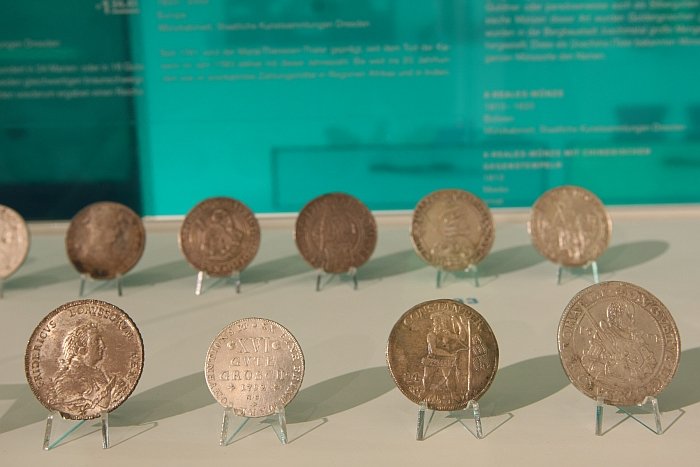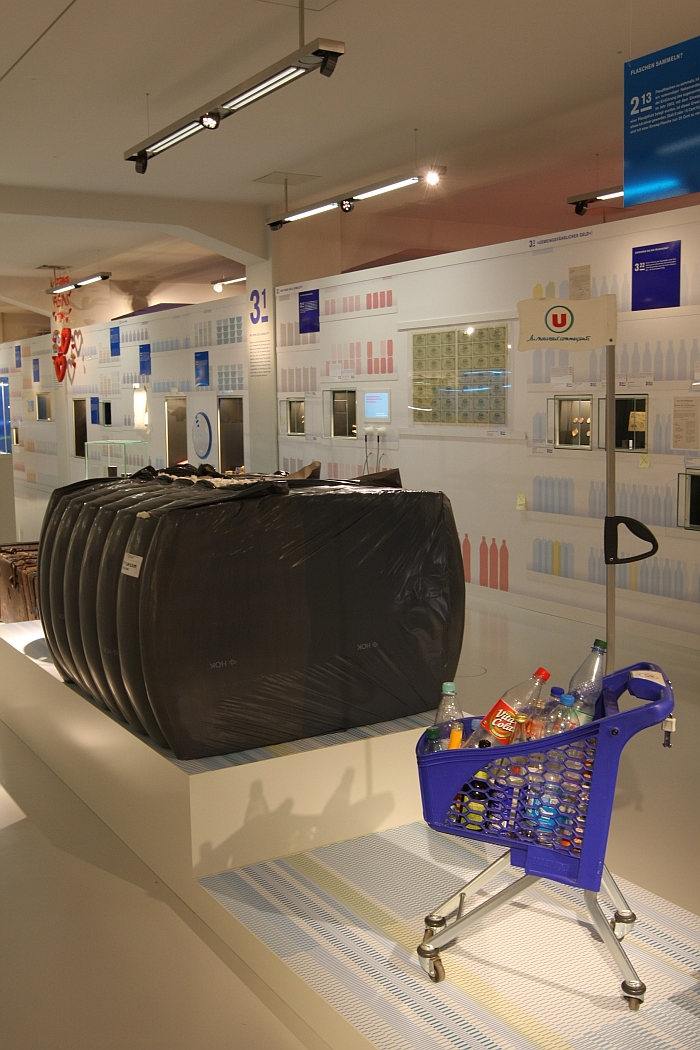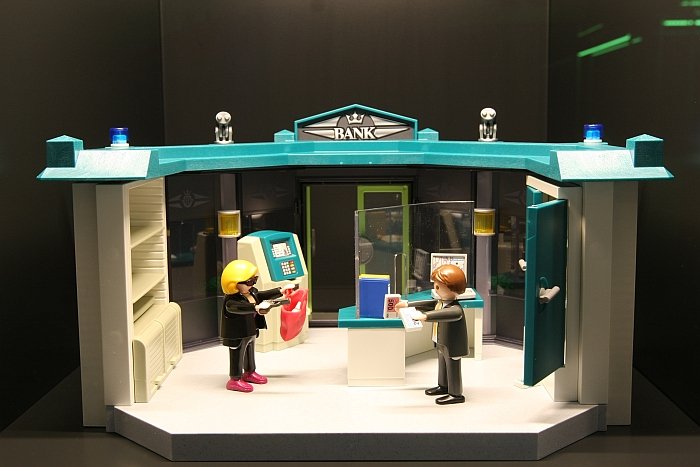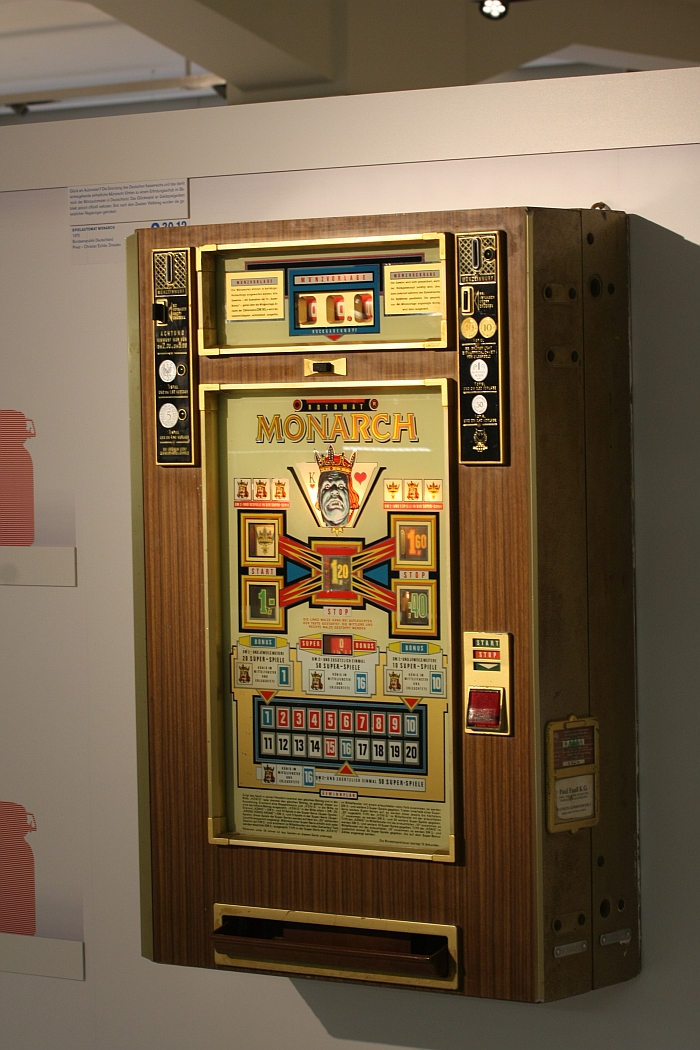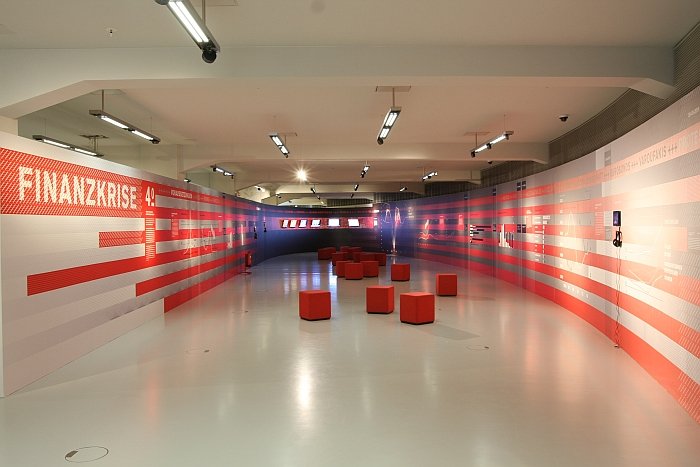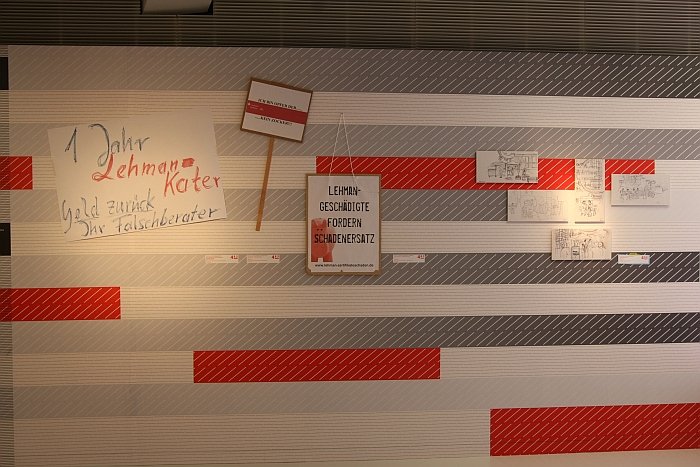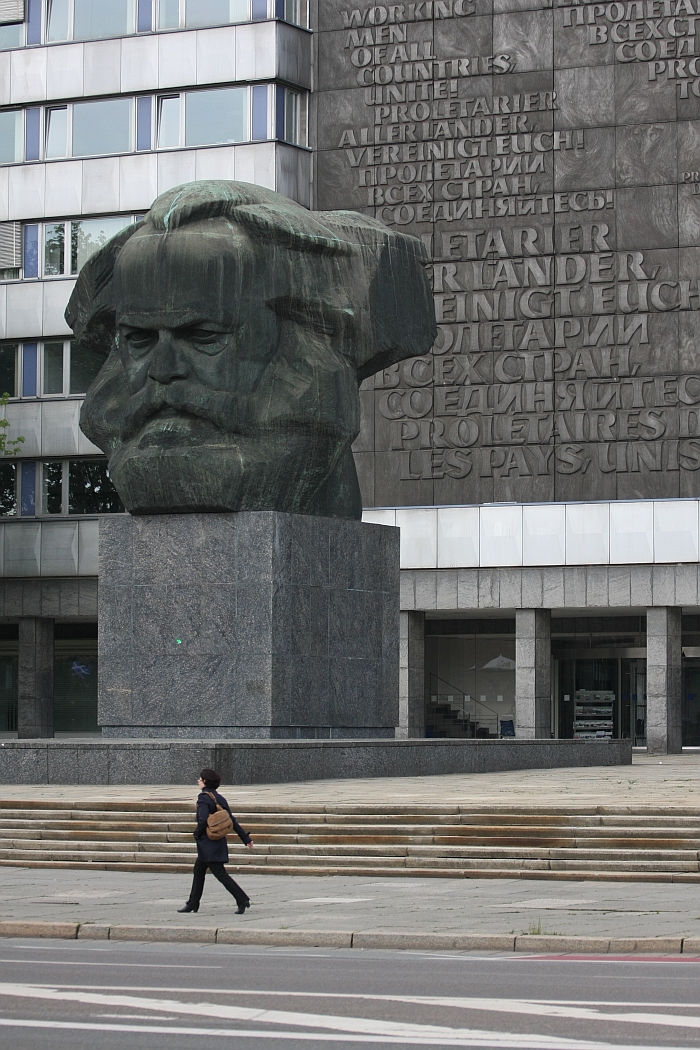Money, famously, makes the world go round. The world go round. Money makes the world go round
How that came to be, the consequences of such, and where that could eventually lead us is currently being explored in the exhibition Geld [Money] at the smac - State Museum for Archaeology in Chemnitz.
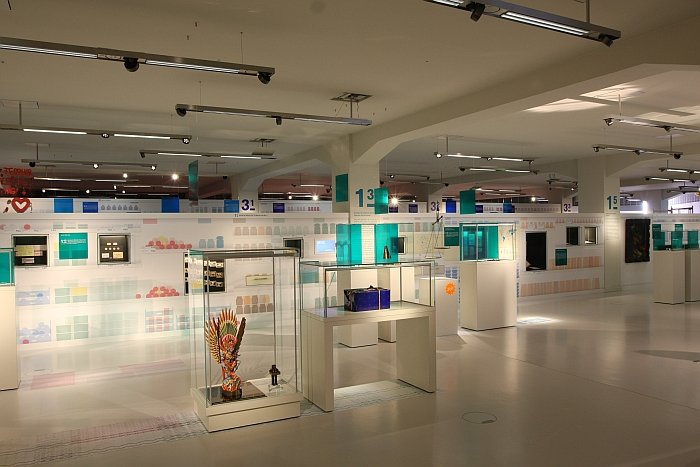
"As an institution we want to present exhibitions which deal with the central themes of mankind, and money is such a topic and one with which we are all permanently engaged", so explains the Dr. Jens Beutmann, the State Museum for Archaeology in Chemnitz's Senior Curator, the background to the exhibition.
To this end and with this aim the smac is presenting historical and contemporary aspects of money and "payment systems" in context of numerous cultures, and through which they approach topics such as what is "money"?, how does/did it arise?, what forms can it take? how does it affect us? and ultimately does money have a future?
And thus as an exhibition concept dissociates archaeological associations with money from those slightly battered Roman coins featuring an impression of someone who could well be Trajan, Caesar Augustus or possibly Homer Simpson, that we've all become tired of staring blankly at in museum display cases, and instead presents archaeology in contemporary social, cultural and political realms.
Something which is pleasingly refreshing.
And in which context one of the more interesting aspects of the exhibition is its confirmation that money is an artificial construction, and the associated confirmation that paper money is in effect just paper. It only becomes money, and so something of value, when another party accepts and understands it as such. Should that other party change their mind, all you have is a piece of paper. An accepted state of affairs which has always been underscored by the trust implicit in all "value transactions", be they based on paper money, shells or sharing, and yet is something which takes on a whole new significance in context of our modern, virtual payment systems... Your financial status being only as good as a computer says it is. And who control's that computer? Not you, that's for certain.
And when did you last worry about that fact?
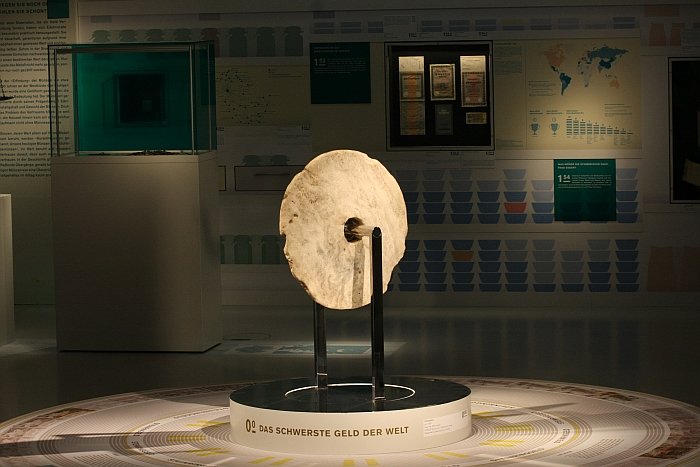
The State Museum for Archaeology in Chemnitz's first self-curated exhibition since it opened in 2014, Geld presents some 500 objects which in addition to looking at "money" itself - yes there are old coins in display cases; but it's OK, they are in context, not just "there" - Geld also explores alternative "moneyless" payment systems, the development of contemporary, virtual, financial systems from the earliest days of book-keeping, the production and distribution of money, both legally and illegally, and the myriad ways in which money has helped shape our contemporary society. Assuming that is money has helped shape our contemporary society. Is it not more the chasing after money, our attempts at acquiring and controlling money, if you will the transfer of the hunter-gatherer mentality from the natural to the financial world, which has helped shape our contemporary society?
"Money is that what we make it, money has no will of its own, but does develop its own dynamism", explains Dr Beutmann and how this dynamism expresses itself is eloquently demonstrated through the numerous examples of the lengths individuals go to just to acquire money: theft, gambling, forgery. One could obviously just work and thereby earn money. Whereby the reference to prostitution sets such a consideration in a very interesting context.
Similarly the fact that some resort to collecting other peoples’ waste in the form of deposit bottles in order to acquire money is a timely reminder that money is a basic necessity, and one who’s distribution isn’t fair. And that this imbalance in financial systems has also long affected the way society develops and has helped form modern understandings of and relationships to money.
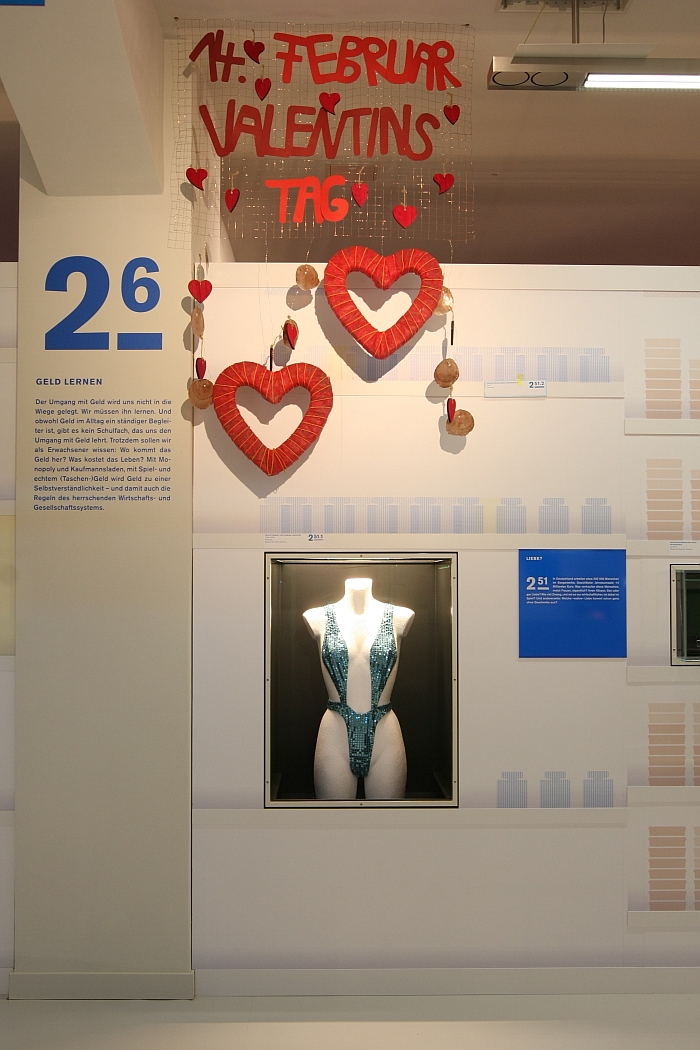
Because so much that surrounds money is related to trust, and because money is simultaneously a basic necessity and an object of desire, something in which everybody has an interest and wants a share, “value systems” invariably fail, bubbles burst as it is so euphemistically put, as if it was some natural phenomenon, something over which no one has any control or influence. In seventeenth century Holland tulip mania became tulip nightmare, in 1929 “Black Tuesday” on Wall Street became “Black 1930s” for America, and the fragility of our contemporary financial system is very neatly brought into focus by the section in the smac’s exhibition looking in detail at the 2007 finance crisis and its consequences, before, very smoothly and intelligently moving on to question the future of money and for all the question if money has a future.
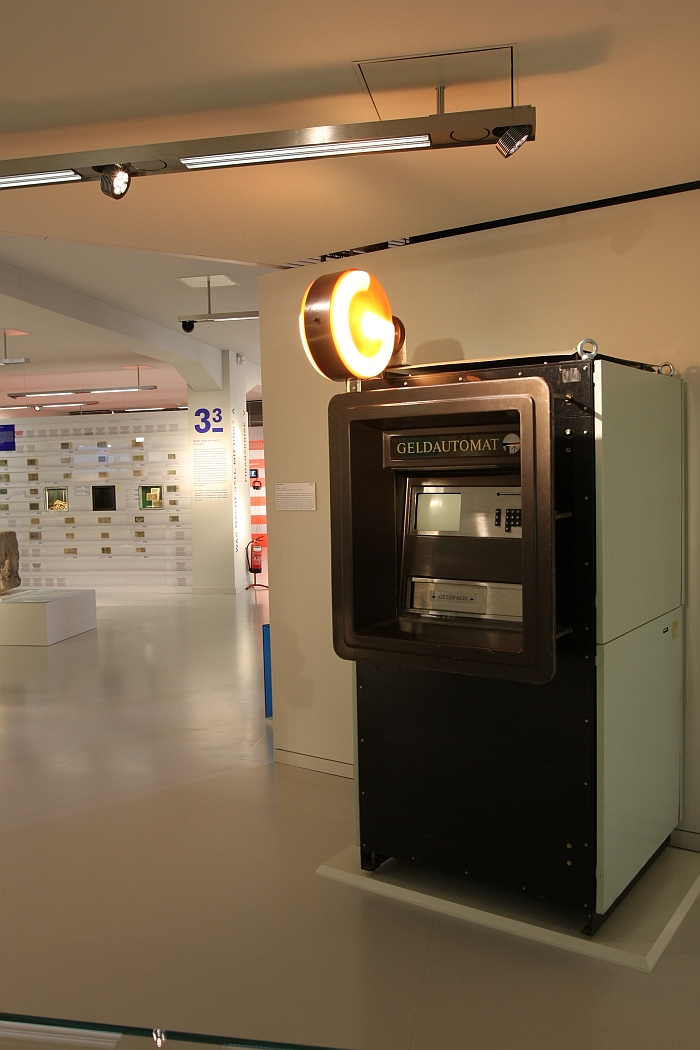
Given this strong social and cultural focus the question naturally arises as to if Geld is still an archaeology exhibition? "Yes, very much so" answers Dr Beutmann, "as a discipline archaeology concerns itself with material goods, that means we don't try to explain history through texts but through objects, and regardless of the age or origins of the objects we understand them and treat them as historical sources." Be that a pre-christian relic, a DDR cash machine or protest banners from those who lost money in the Lehman Brothers crash. They all have something to say, and are all part of a story.
In addition Geld is for us also very much a design exhibition, an exhibition which underscores that "money" is also a design question, not in that sanctimonious graphic design way where the internet gets all excited because this or that country has brought out a new ten whatever note, nor so much in terms of classic product design, even if Geld does feature several fascinating examples of objects developed purely in context of money and financial systems, but rather underscores that money is a design question in terms of how can we create a society in which money either isn't necessary or if it is necessary that its use, distribution and effects are rational, fair and positive. And where bubbles aren't possible. Or as Dr Beutmann phrases the question "must society change so that money changes, or is it now the the correct moment to change money so that society can change?" Such are questions where designers have an important role to play.
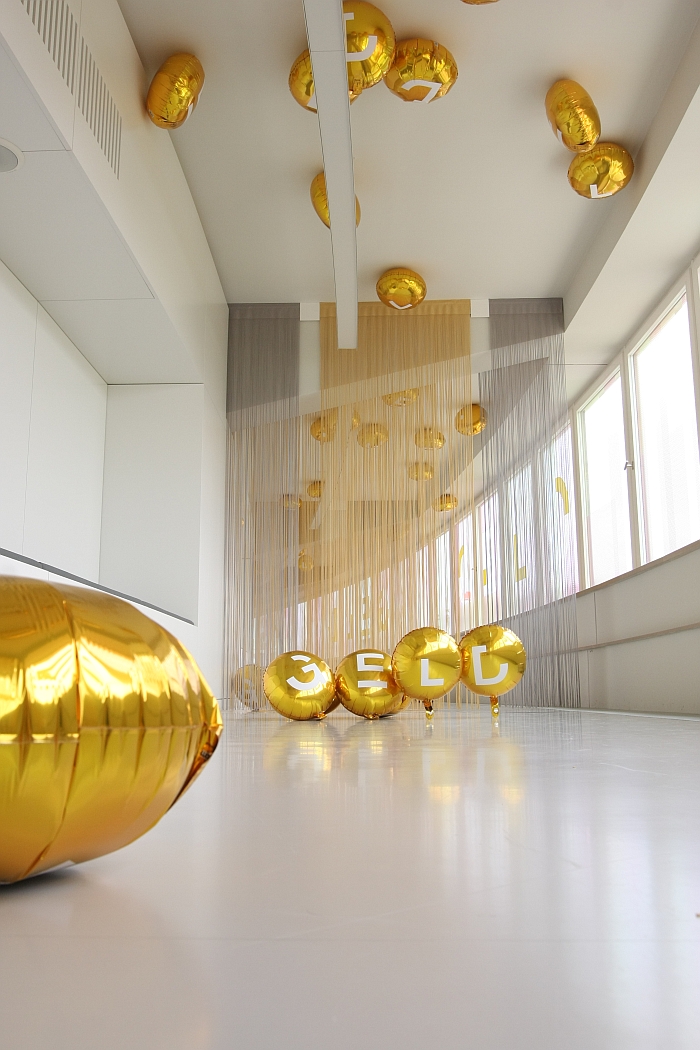
Presenting a mix of local, Sachsen, exhibits as well as global objects, Geld is a very well conceived and accessible exhibition which explains the subject in a clear and non-judgemental fashion and for all one which motivates visitors to think beyond the exhibits on display and more about the money in your pockets, your savings in the bank, the reserves tied up in your house, the tax return you really should get finished but which is just too scary, the homeless newspaper seller you didn't buy a paper from last week and the price you just paid for a very simple filled roll at the railway station.
Money is a curious beast, we are all concerned with it on a daily basis, all accept its intricacies and foibles, yet money remains a wholly abstract concept, money has neither identity nor character, one can buy anything with it except style, manners and respect for your fellow humans, we all need money, yet pretend we don't, it embarrasses and empowers in equal measure, and yet remains something we tend not to think that deeply about. Or at least try not to. Geld at the smac – State Museum for Archaeology in Chemnitz explains why you should.
It is very fitting that the State Museum for Archaeology in Chemnitz is hosting such an exhibition. Or better put, it is very, very fitting, for there are two good reasons.
On the one hand the smac is housed in the former Schocken department store, and as we noted in our post from the museum's opening, the sensitive conversion means that it "still resembles a department store; which we mean positively. Something about the white painted pillars and the open plan floors lead you to believe that, with a bit of luck, on the floor above you might be able to find a pair of jeans on special offer." This referencing of the building's origins is continued in the exhibition scenography by Berlin based studio chezwitz, in which supermarket aisles are recreated in terms of both the formal layout of the space and the background graphics. What was a bustling temple of commerce is now a place for quiet reflection on the systems that make such possible.
And on the other hand, it is fitting because if you squint out the museum's windows you can just about see the monumental, as in megalithic, Karl Marx bust which dominates downtown Chemnitz, "If money is the bond, that which binds me with human life, society, nature and man, then is money not the bond of all bonds? Can it not bind and dissolve all ties? Is it therefore not the universal means of separation? It is the true agent of separation and of binding….." wrote Marx in 1844, which is of course nothing more than an early communist version of,
Money makes the world go round. The world go round. Money makes the world go round
Geld runs at the smac - State Museum for Archaeology in Chemnitz, Stefan-Heym-Platz 1, 09111 Chemnitz until Friday December 30th.
Further information, including information on the accompanying fringe programme, can be found a www.smac.sachsen.de

